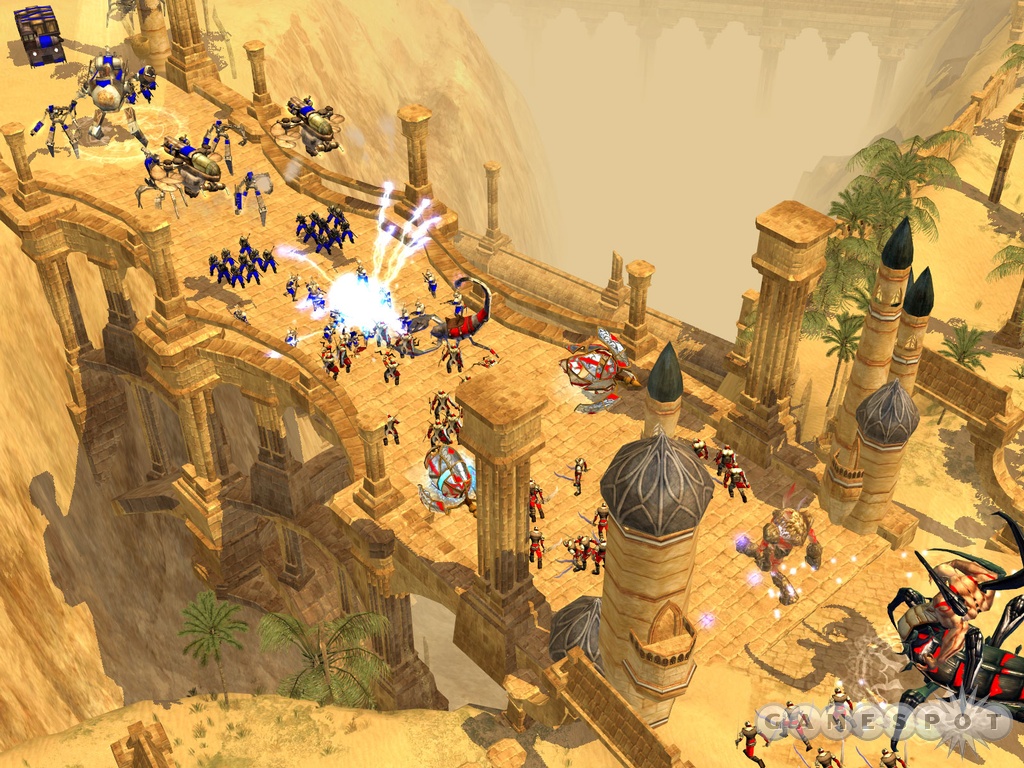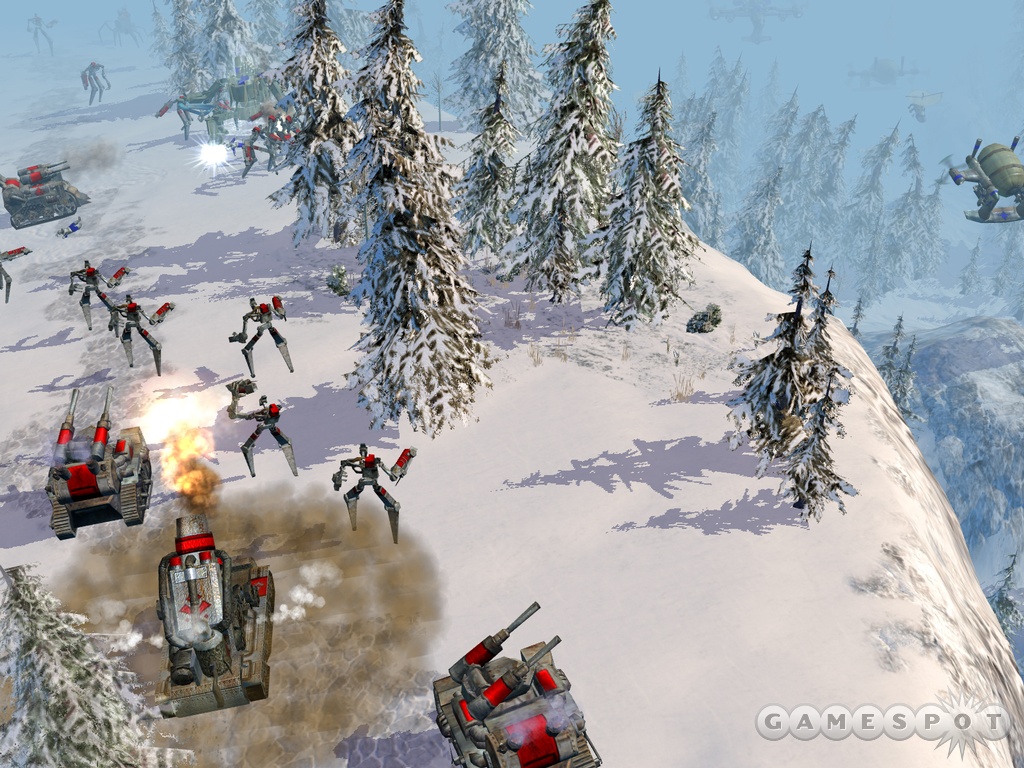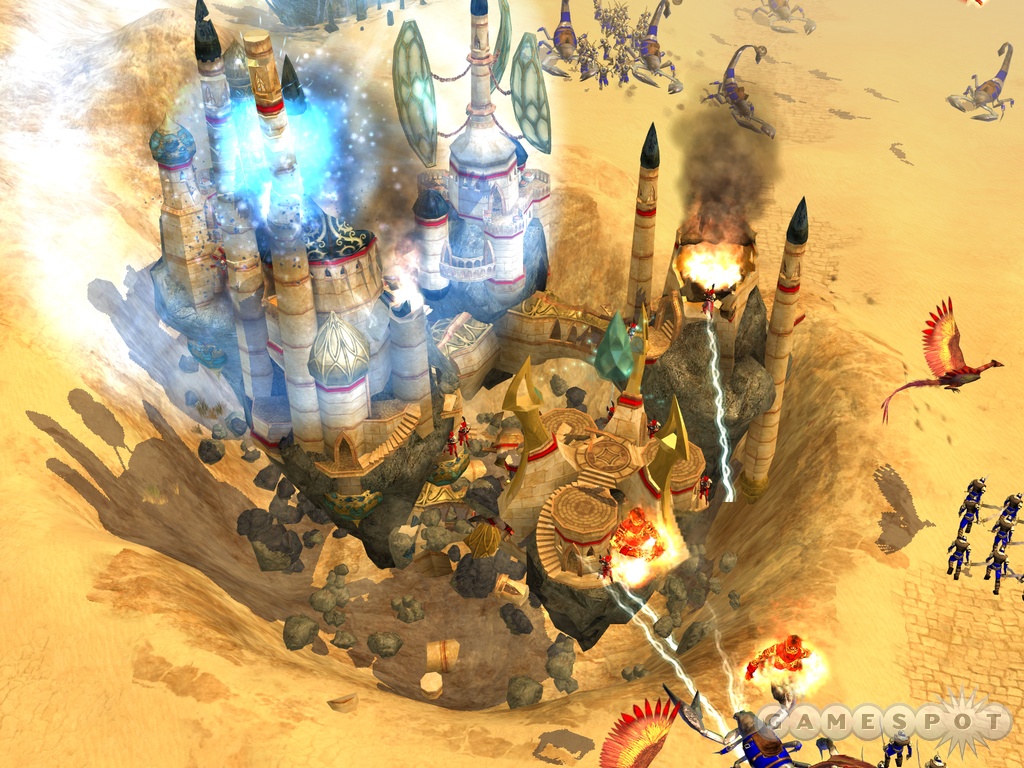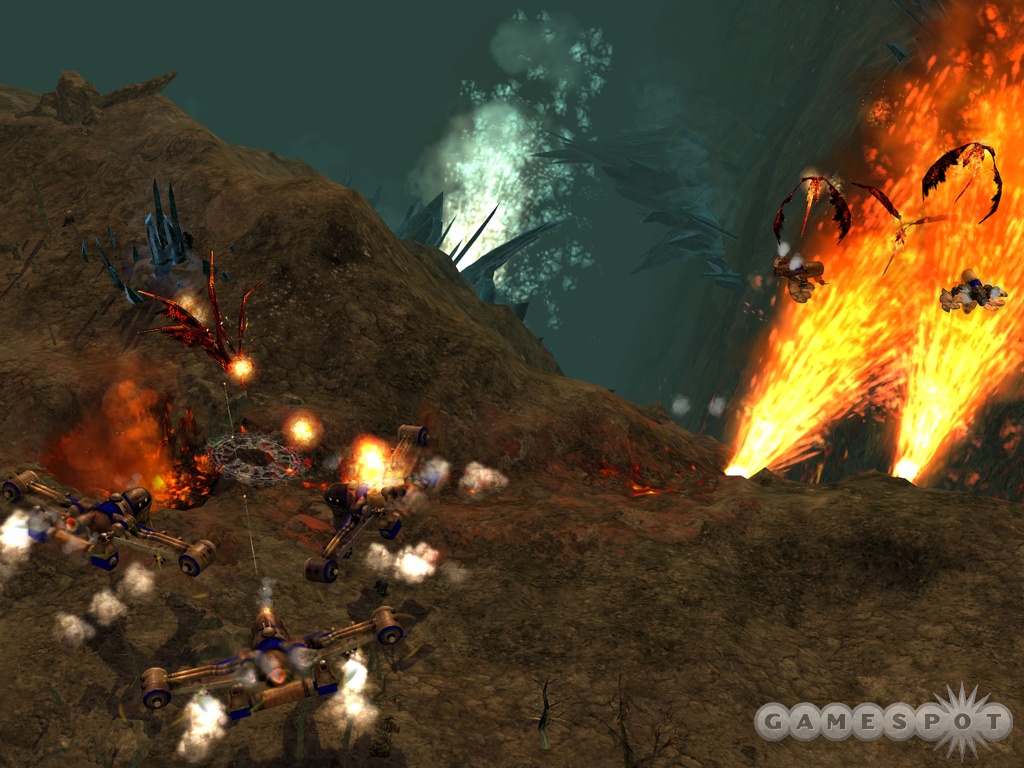Rise of Nations: Rise of Legends Designer Diary #4 - How to Balance a Fantasy Game
Big Huge Games explains the methods and challenges in trying to balance the three unique fantasy races in Rise of Legends.
Rise of Nations: Rise of Legends is the follow-up to Microsoft and Big Huge Games' critically acclaimed 2003 real-time strategy game Rise of Nations. Yet, it's also a completely different style of game. Whereas Rise of Nations was a historically inspired real-time strategy game that let you take command of one of the world's 18 nations and guide it from the beginning of time to the modern age, Rise of Legends is an original fantasy game that will let you take command of one of three unique races in the battle to dominate the game's fictional world. You'd think that with just three races (compared to 18 in the original) Rise of Legends would be an easier game for Big Huge Games to make, but that'd be a wrong assumption, as Big Huge Games explains in our latest designer diary. Rise of Legends is scheduled to ship next year.

Balancing Legends
By Big Huge Games StaffIt's time to balance the game.
Of course, the balance process is ongoing practically from the start of the project, but during the initial design phase there are so many new features going in and so many confounding factors that it's not productive to worry too much about nation balance or unit balance. One thing we always keep in mind is whether a given feature is "balanceable." That is, can it be adjusted up or down in strength when the time comes without fundamentally changing its nature? Most features have some "handles" that can be pulled--a duration that can be increased or decreased or a strength that can be raised or lowered. Occasionally there comes a feature where there is not enough subtlety to the gradations and there's just no way to balance, because at level two it's too weak and at level three it's too strong, and we don't have access to fractions. Those are features that either all nations/units have to share or that we don't dare put in the game.
But now we're far enough along in the project that, although all features are not yet in, we have a strong idea of what they'll all be. Time to start fine-tuning.
The balance process is incredibly hard and ultimately doomed to failure. Yes, failure. With a limited pool of players who have been exposed to versions of the game from early on, it's almost impossible to find every exploit or every strategy. And if one of the missed strategies is overpowering, you have an imbalance.
That's why we do beta testing, with hundreds or thousands of players, as close to the end of the project as feasible. Even then it's possible to miss something, because these new players are at first concerned with learning the game, and there isn't time to really mature as a player and start systematically searching for exploits. Even so, the beta process typically yields a game that will be balanced for the consumer for quite a while, or at least until the really dedicated players who buy the game play a lot and then ultimately come across some strategy or another that is unbeatable.
God bless the Web.
With patch updates, we can take player feedback into account and make adjustments for everyone who owns the game. This ongoing process has preserved the balance for any number of great games, all of which were shipped with at least one hidden exploit or overwhelming strategy.
Rise of Legends presents a completely different balance challenge from that of Rise of Nations. With Rise of Nations, we knew we wanted a large number of different races to reflect the wide diversity of nations in the world. While ideally each one would have unique factors that made it feel different in play, they all fundamentally shared the same rules set and the same unit set.

Also, Rise of Nations used a more rock-paper-scissors approach to combat, with each unit type having one or more distinct counters. This actually made balance easier, since the relationship between, say, archers and heavy infantry was an isolated one and could be adjusted vis-a-vis the economy and unit availability to produce a reasonable feel that X number of archers could always defeat 1.7X of infantry.
Finally, Rise of Nations was a historical game, and the various interactions were greatly informed by expectations and examples from the real world.
The Russian Lesson
With Rise of Legends, we took a different approach in each of these categories. As a fantasy game, it is informed only by the mildest of expectations (inexplicably, we all have some idea of how a giant scorpion should behave). We also decided to take a more holistic approach to unit interactions. Instead of "strong counters," we have various factors that make up each unit in a sort of mix-and-match method. Therefore, balancing any given two units is much more difficult, because changes to that interaction cascade through all other interactions with these two units. 
Finally, we made the decision early on to support only three races, and to make those races very different--sometimes with changes to the basic rules of how the game is played. On the surface this should be easier, balancing three races versus balancing 18. But, in fact, it's harder, because those three races need to maintain a very distinct identity. They each need to offer new strategies and different lines of play from one another while still being fairly matched against each other.
That's the why of it. Here's a little bit of the how.
We're looking for two things when we make balance passes: overall balance between nations and individual unit balance. With individual units, you'd think a fantasy game would have a leg up because there are no historical precedents to worry about. Again, it's not as easy as it looks. Any given unit needs to be something that a given player in a given situation will find useful and fun to use. If a particular unit is rarely built, even across a variety of tactical situations, then it's out of balance. Maybe it costs too much, or maybe its functions are already better served by building some other unit. Generally we get reports of people's play styles and keep our eyes open for a unit that's being underused or overused. In rare cases this is made more difficult by art considerations. If a unit is simply too strong, for instance, it's easy to lower its attack strength. But if the unit is a gigantic stone statue with a cannon that fires a huge energy beam, then there's a minimum value below which it's just not reasonable to lower that unit. If we need to weaken it further, we either have to make it more expensive to obtain, or change the art, which is usually no mean feat by this time in the project.
Overall balance is, as previously mentioned, a real bear. It's not easy to find two players who are of relatively equal skill (so that results aren't confounded by vast differences in ability); once you find them, it's not easy for them to get out of habits and truly explore all the possible strategies. The better we do our job, in fact, the harder it is, because there are more seemingly attractive strategies to test. This is further made difficult by the differences in the types of imbalance one finds between two low-level players playing against each other, and two pro-level players playing against each other. A good example of this was the Russians from Rise of Nations. At casual levels of play, they were a fun, balanced race that, if anything, was a little too powerful. But once the pro players got the hang of the game, it was discovered that, in fact, it was impossible to win as the Russians. This would have argued for making them stronger, but the casual players were having so much fun with them and were finding them so strong that to make them stronger would have thrown the casual game out of whack. We finally decided that it was OK to have one of our 18 races be one that the pro players just wouldn't touch.
Again, with Rise of Legends, we don't have the luxury. All levels of skill (equally matched, of course) need to find all three races equally compelling and viable.

We're just beginning the process, and we have a long, hard road ahead of us. We recently instituted the "exploit of the day," where our crack testers inform us as to what the winning strategies appear to be at the current state of the game. By responding to these earlier in the process than usual, we hope we've set the stage for a well-balanced offering for the pro players in the Microsoft test team, who will then set the stage for the beta testers, who will then deliver a really well-balanced product to the consumer.
But, God bless the Web, just in case.
Got a news tip or want to contact us directly? Email news@gamespot.com
Join the conversation